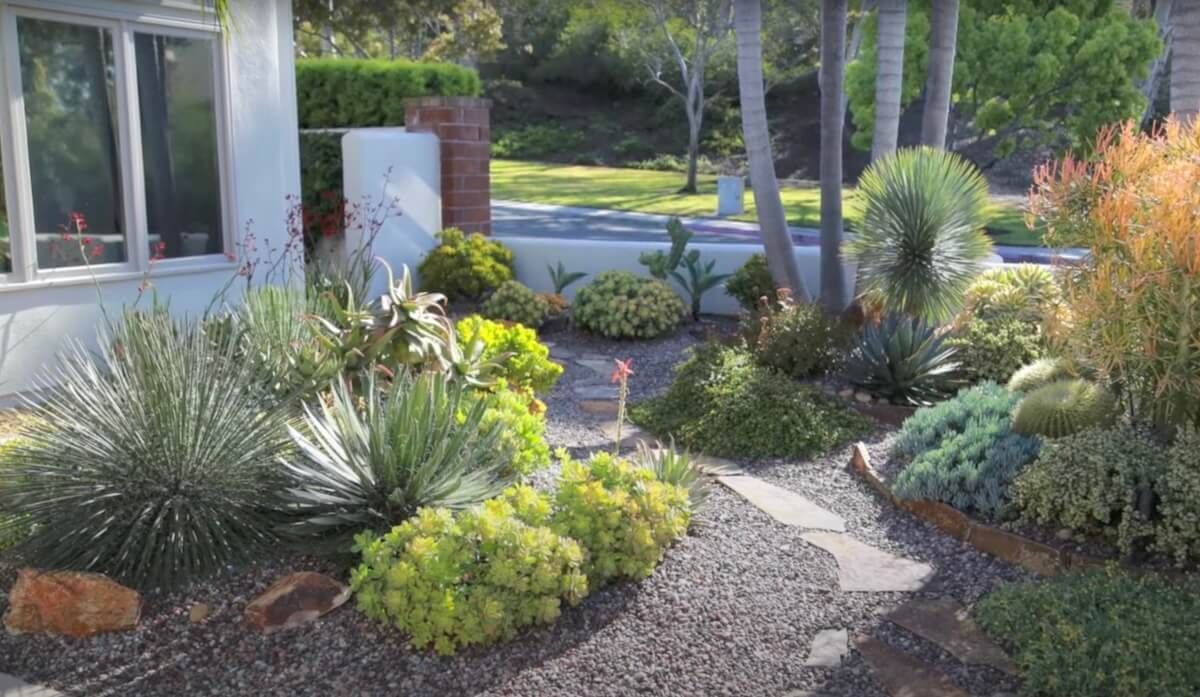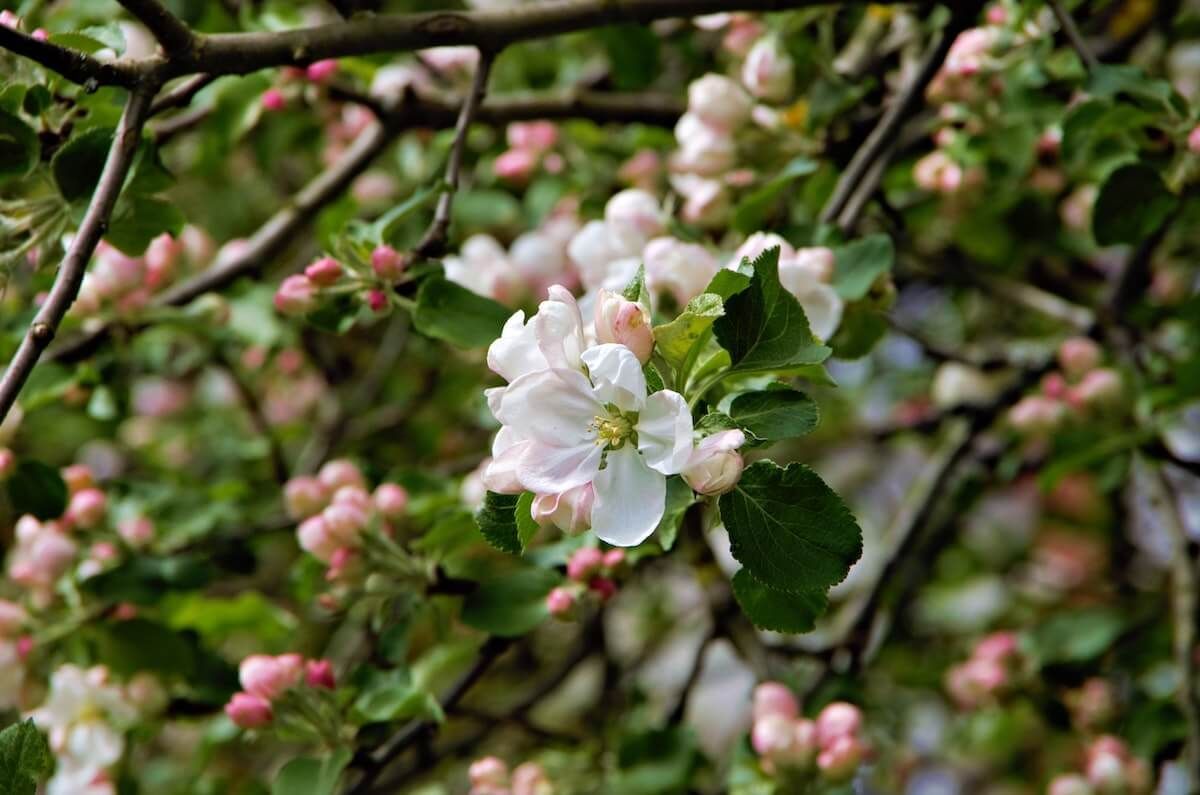Desert Landscaping Advice

The desert landscape is one that is full of life, beauty, and a complex set of rules. If you live in an area that is hot and does not have a lot of rain, your choices for home landscaping may not sound so plentiful.
Yet, there are many ways that you can create a natural landscape using all sorts of wonderful plants and garden design techniques that are easy to maintain and provide for the look that you are after.
Southwest landscaping with colorful plants can be a challenge, but only until you learn a few secrets to desert landscaping.
A Colorful Desert Landscape
If you live in a desert landscape area, you do have solutions. You can still have a beautiful landscape that is filled with beautiful, even colorful plants.
What you need to do is to find natural landscape plants that are ideal for the conditions in your area. For example, you are likely to look for plants that are drought tolerant, meaning that they will grow even when there is not a lot of water. In addition, you will want to find low-care and low-maintenance garden plants as well.
When it comes to desert landscapes, choose your plant choices wisely. Of course, you can always choose from a variety of succulent plants, but many of these don’t have beautiful blooms.
If you will be planting flowers then you will want to consider such heat-tolerant choices as lantana, Red Bird of Paradise, oleander, hibiscus, lilac, lavender, gooseberry, or the hummingbird flower for your desert landscape.
These flowering plants are easily grown in some of the harshest weather conditions. Your natural landscaping may already have in place some of these or other plants that are hardy even in the heat and dry conditions, but it is best to go ahead and replace the entire garden with flowering plants that will not be cause for concern each summer season.
To ensure that they grow well, make sure to provide the right plant nutrients in the soil. You can add organic materials to the soil to help in boosting the quality of the soil from less sand to more organic materials.
Especially in desert landscape areas, the soil is usually lacking potassium and phosphorus, two important macronutrients.
Both of these macronutrients can be added to the soil with the right fertilizer or even by using organic compost in natural lawn care.
A desert landscape can be made better with just the right additions to it. While you can find many planting flowers to aid your desert landscape, look for more natural elements to add as well.
For example, consider a stone landscape as well. This can mean using more rocks that are natural to the area, perhaps in a variety of earthen tones to add dimension to a gravel landscape design.
It is essential to incorporate the right plants that are hardy into a desert landscape. You can find additional choices located at your standard garden center.
To further add attractiveness to a desert landscape, the right rock landscaping will add dimension to the select amount of flowering plants and will also bring out the natural look of a desert landscape yard.
Earthscape: Designs for the Entire Neighborhood
While it was common twenty years ago for many home landscapers to only consider the landscaping designs in their own front and backyard, the new take on home landscaping is to also consider the entire look of the neighborhood, otherwise known as earthscape designs.
Earthscape really means to consider the entire surroundings of the earth and how they are cared for, but the term earthscape has been condensed to mean caring for the surroundings closest to you.
With this in mind, many landscaping companies are taking part in projects where they are actually earthscape-designing entire neighborhoods.
This adds to both the beauty and value of a neighborhood and especially adds to the value of your home. What if your neighborhood building company cannot afford to earthscape?
Is there a way you can go about doing it yourself? Absolutely. With a little perseverance, you can make earthscape your neighborhood into a beautiful place for walks, bicycle rides, and children's play.
First, you will want to consider what needs to be earthscape designed? Are there curb areas of the neighborhood or center islands in cul de sacs? In some neighborhoods, there are even empty fields where grass and weeds are growing out of control.
The next step is to determine who can help with your earthscape project. Many neighborhoods have a homeowners committee that gets together every month to decide on issues like this.
From here, you can select a sub-committee to help with the earthscape needs in the neighborhood. This may simply mean mowing community grass, planting flowers, or getting ahold of neighbors who have not been maintaining the curb appeal of their homes.
If there are sections of the neighborhood that need a landscaping design, you will want to consider that a neighborhood earthscape design has to be something that is easily maintained.
Gravel landscaping, stone landscaping, or rock landscaping can be easy solutions to a neighborhood eyesore. For neighbors that have more time to spend on an earthscape, you might want to consider a nice walkway design leading up to a park. All of these earthscape designs can only add appeal to the entire neighborhood.
Of course, the easiest way to implement and maintain an earthscape design would be to hire landscapers or consult someone for landscaping advice.
The only problem with this is determining who will pay for the cost of a landscaping company. Many homeowners associations will charge a small fee that will cover these concerns, that way no one in the neighborhood is responsible for the earthscape upkeep.
It is often difficult enough to maintain your own lawn, let alone the common areas for the entire neighborhood.
Some neighborhoods even note that those homeowners who refuse to pay fees are not allowed to use common areas, such as parks or beaches.
It only seems fair that those paying for earthscape designs should be the ones to enjoy them in the long run.











